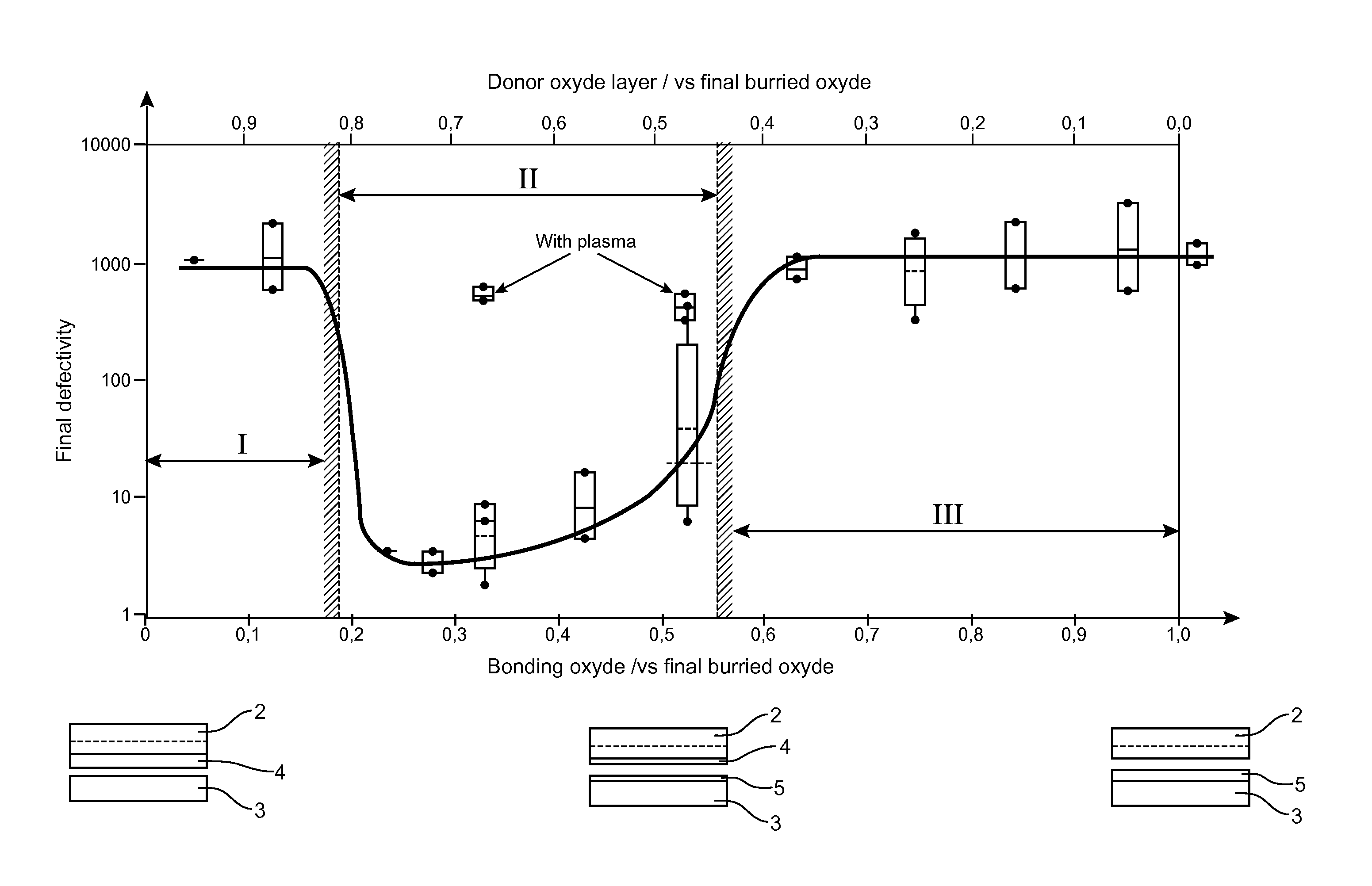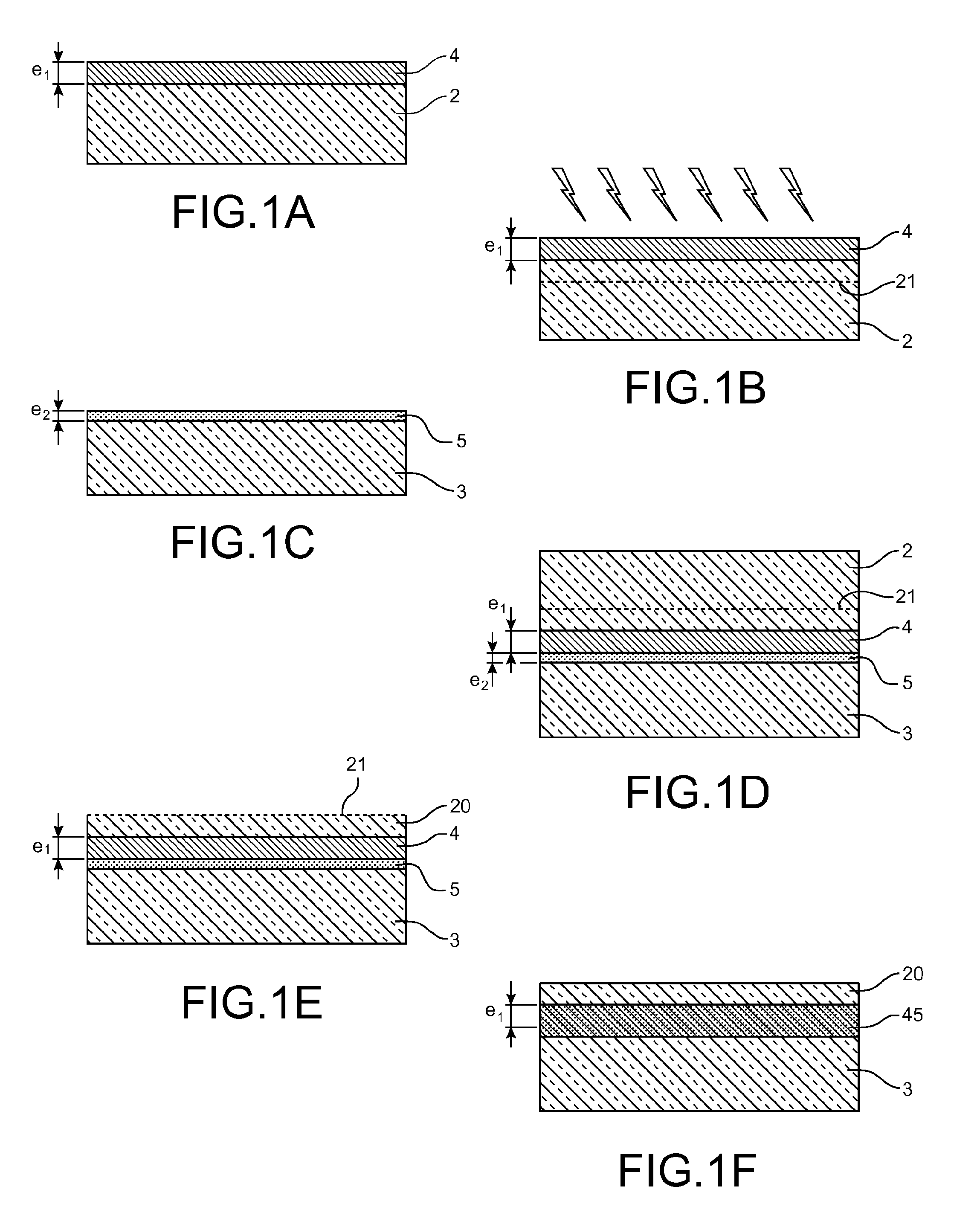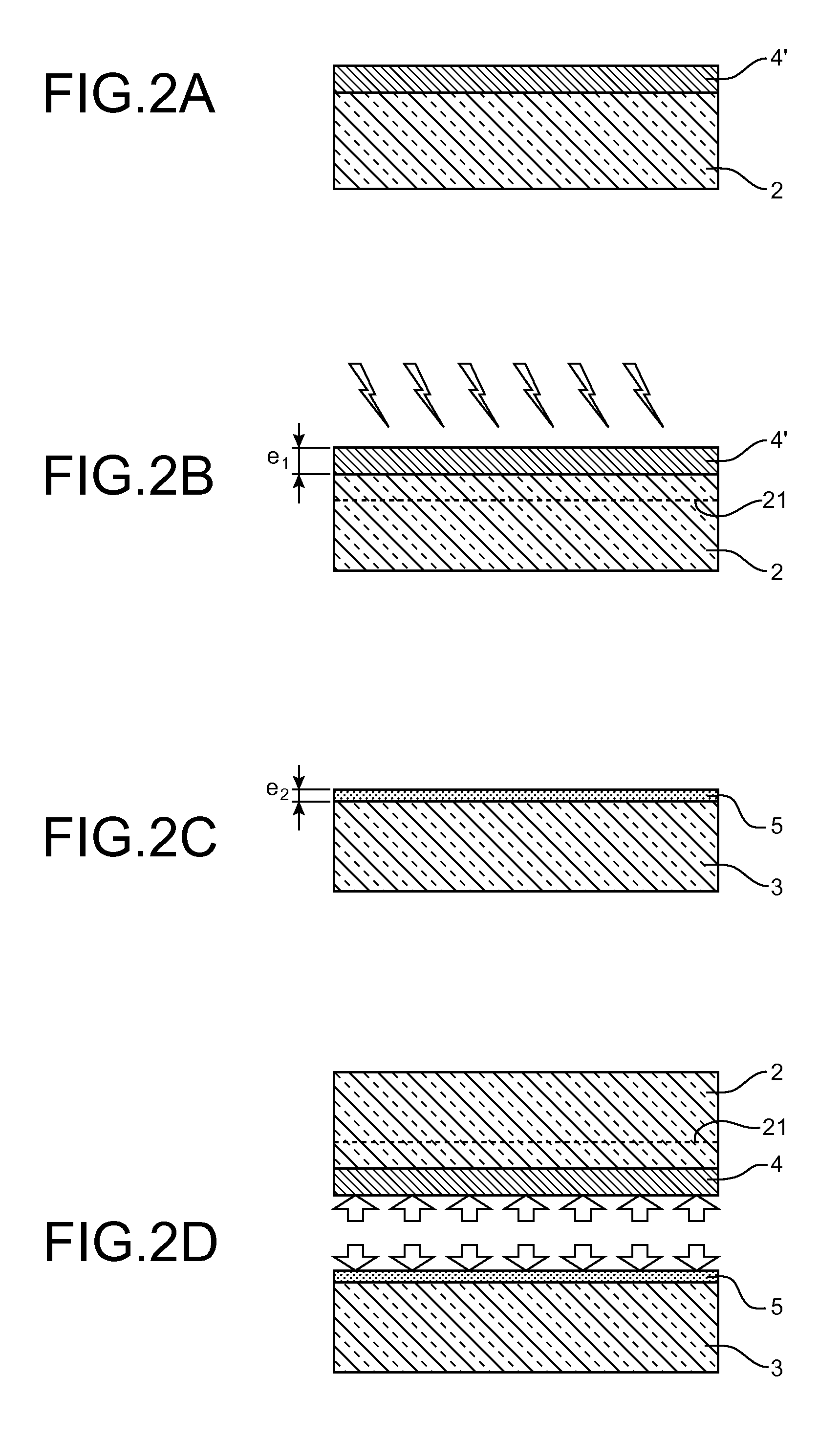Method for producing a stack of semi-conductor thin films
a technology of semi-conductor thin films and stacks, which is applied in the manufacture of semiconductor/solid-state devices, basic electric elements, electric devices, etc., can solve the problems of reducing the dimension of the oxide layer, forming defects at the bonding interface, and affecting the final semi-conductor structure, so as to reduce the exposure time of the device
- Summary
- Abstract
- Description
- Claims
- Application Information
AI Technical Summary
Benefits of technology
Problems solved by technology
Method used
Image
Examples
Embodiment Construction
[0041]The invention relates to a method for producing systems of stacked SOI type semi-conductor layers and, more specifically, UTBOX type, in other words with ultra thin thickness of buried insulator layer.
[0042]The method is illustrated according to two embodiments in FIGS. 1A to 1F and 2A to 2G, any reference corresponding to a same element in the different figures.
[0043]The first embodiment (FIGS. 1A to 1F) relates to a method for producing SOI structures with thin buried insulator layer, thinner than 50 nm; advantageously this insulator layer is less than 20 nm, and preferentially less than 15 nm, it may also be less than 10 or 7 nm.
[0044]The insulator is preferentially an electrical insulator, it may be a nitride layer or may advantageously be an oxide layer, for example a silicon oxide. In the remainder of the description, the example of oxide layers is taken but this is not limitative. As explained previously, in a method according to the invention, during the bonding, the i...
PUM
 Login to View More
Login to View More Abstract
Description
Claims
Application Information
 Login to View More
Login to View More - R&D
- Intellectual Property
- Life Sciences
- Materials
- Tech Scout
- Unparalleled Data Quality
- Higher Quality Content
- 60% Fewer Hallucinations
Browse by: Latest US Patents, China's latest patents, Technical Efficacy Thesaurus, Application Domain, Technology Topic, Popular Technical Reports.
© 2025 PatSnap. All rights reserved.Legal|Privacy policy|Modern Slavery Act Transparency Statement|Sitemap|About US| Contact US: help@patsnap.com



